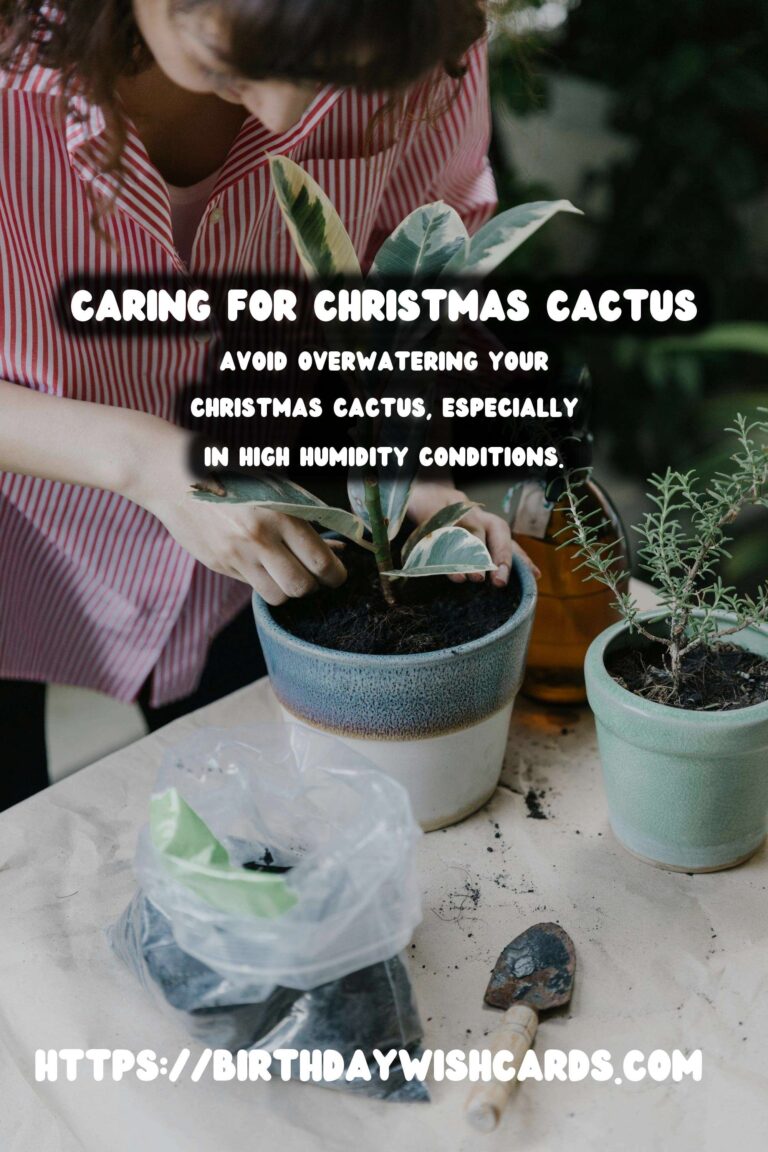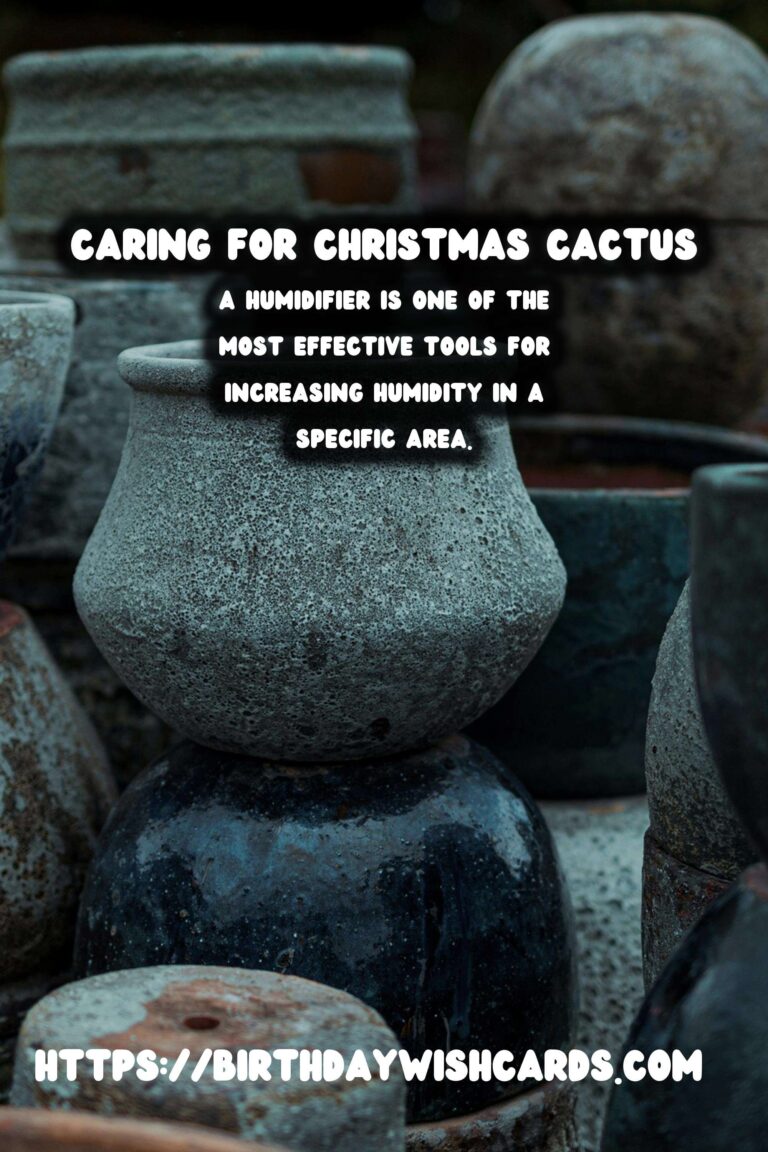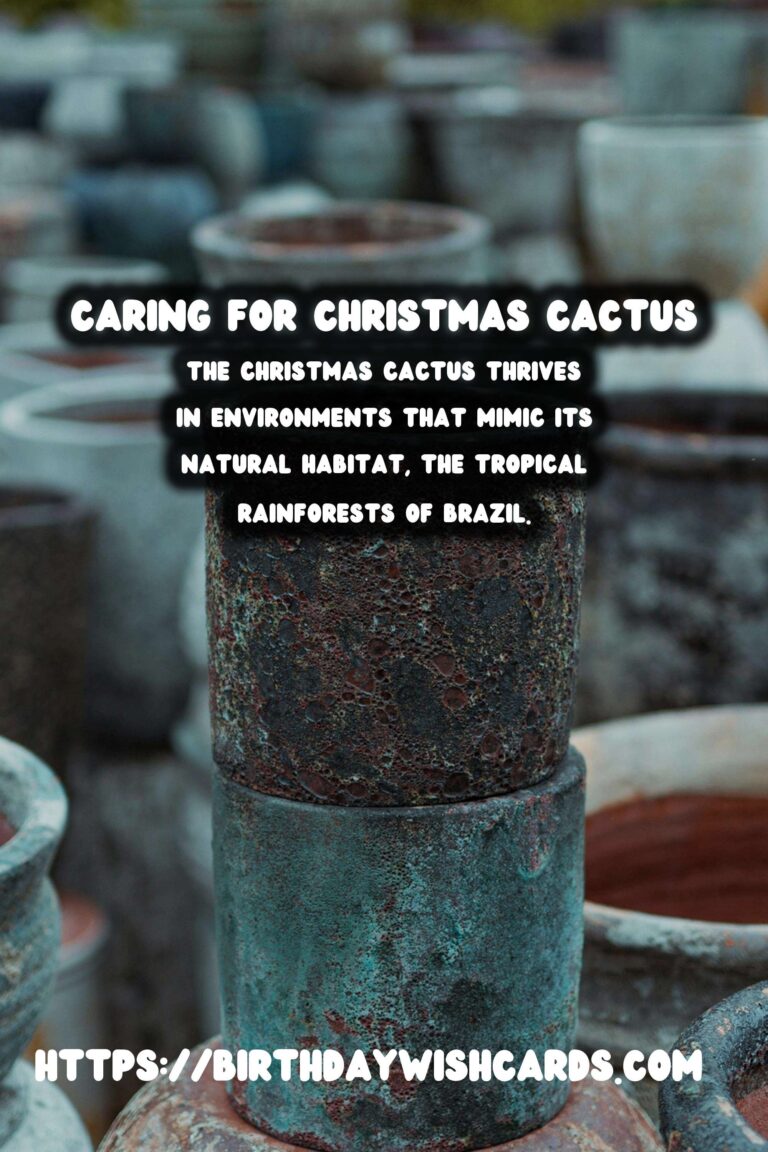
The Christmas cactus, a popular holiday plant, is cherished for its vibrant blooms and easy maintenance. However, one often overlooked aspect of its care is understanding and providing the right humidity levels to ensure its healthy growth. In this comprehensive guide, we will delve into the importance of humidity for Christmas cactus, how to measure it, and practical tips for maintaining optimal humidity levels.
Understanding the Humidity Needs of Christmas Cactus
Christmas cactus, scientifically known as Schlumbergera, thrives in environments that mimic its natural habitat— the tropical rainforests of Brazil. These plants are epiphytes, meaning they naturally grow on trees and absorb moisture from the air. Therefore, they prefer higher humidity levels, typically between 50% and 60%.
If the air in your home is too dry, especially during winter months when indoor heating is prevalent, your Christmas cactus may suffer. Signs of low humidity stress include wilting, bud drop, and dull foliage. Understanding these signs can help you adjust the environmental conditions to better suit your plant’s needs.
How to Measure Humidity Levels
Before you can adjust the humidity for your Christmas cactus, you need to know the current humidity levels in your home. This can be done using a hygrometer, a simple device that measures the amount of moisture in the air. Hygrometers are available in both digital and analog formats and can be easily found online or at garden centers.
Once you have a hygrometer, place it near your Christmas cactus to get an accurate reading of the humidity in its immediate environment. If the reading is below 50%, you should consider methods to increase the humidity.
Increasing Humidity for Your Christmas Cactus
There are several effective ways to increase humidity around your Christmas cactus:
1. Use a Humidifier
A humidifier is one of the most effective tools for increasing humidity in a specific area. Place a small, portable humidifier near your Christmas cactus, ensuring it runs as needed to maintain the desired humidity levels.
2. Create a Humidity Tray
Another simple method is to create a humidity tray. Fill a shallow tray with pebbles and add water just below the top of the pebbles. Place your Christmas cactus pot on top of the pebbles. As the water evaporates, it will increase the humidity around the plant.
3. Group Plants Together
Grouping your Christmas cactus with other houseplants can create a micro-environment that boosts humidity naturally. As plants transpire, they release moisture into the air, benefiting each other.
4. Mist the Foliage
Misting the foliage of your Christmas cactus can temporarily increase humidity levels. Use a fine spray bottle to mist the plant, but ensure that the leaves dry out during the day to prevent any fungal issues.
Avoiding Overwatering in High Humidity
While maintaining high humidity is crucial, it is equally important to avoid overwatering your Christmas cactus. High humidity can reduce the evaporation rate, meaning your plant’s soil may stay moist longer. Always check the top inch of soil before watering. If it feels dry, it’s time to water. Otherwise, wait a few more days to prevent root rot.
Conclusion
Caring for a Christmas cactus involves more than just watering and fertilizing; understanding and adjusting the humidity levels can make a significant difference in its health and blooming potential. By following these guidelines, you can ensure your Christmas cactus remains vibrant and healthy throughout the holiday season and beyond.
The Christmas cactus thrives in environments that mimic its natural habitat, the tropical rainforests of Brazil. Christmas cactus prefers higher humidity levels, typically between 50% and 60%. Use a hygrometer to measure the humidity levels around your Christmas cactus. A humidifier is one of the most effective tools for increasing humidity in a specific area. Avoid overwatering your Christmas cactus, especially in high humidity conditions. 









#ChristmasCactus #PlantCare #Humidity #IndoorPlants #GardeningTips




